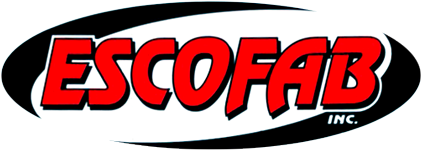Metal and its accompanying metalworking processes make the world go round. Metal parts are used in many industries, ranging from electronics to automobiles to medical equipment—but have you ever wondered how these intricate metal parts come to be?
Often, they become finished products through metal fabrication and machining. Custom sheet metal is repeatedly shaped into various parts through machining and fabrication processes. Machine shops specialize in metal fabrication projects that can be performed both at massive and small scales.
In this article, we’ll cover the difference between metal fabrication and machining with some FAQs.
Is there a simple way to distinguish metal fabrication and machining?
Yes, and we’ll begin with an art analogy. Metal machining is akin to the art of sculpting. A block of metal is taken and has portions of it removed to create a finished product. This is similar to a block of marble being chipped away until a sculpture of a person remains.
Metal fabrication on the other hand can be likened to origami. Metal fabrication projects involve taking a piece of metal and cutting, folding and forming it into the desired shape. In the same way that an origami artist takes a piece of paper and shapes it into a swan or other animal, a metal fabricator takes custom sheet metal and transforms it into a completed metal part.
What is metal fabrication?
Metal fabrication is a value-added process. Fabricators typically start with a sheet of metal, often made of aluminum or stainless steel. From there, they craft the metal into the desired shape and specifications through bending, punching, welding, cutting and forming processes. The sheet can be turned into products, tools or equipment that can be used in a wide variety of industries.
What is metal machining?
In contrast to metal fabrication, metal machining is a subtractive process. This means that it removes metal from a standard block to craft the desired product. Because of the amount of material involved, there are several types of metal machining processes. These include milling, turning and drilling. These processes can be conducted slowly so the machinist can gradually remove layers of metal to achieve the correct shape.
What is CNC machining?
Computer numerical control (CNC) machining is an automated machining process. It utilizes computers to precisely conduct various machining processes with unrivaled accuracy. A CNC machine is not only more exact than most human machinists but also more efficient too. A CNC machine can churn out products at a much faster rate than human beings and has begun to revolutionize the metal machining industry.
What are some examples of metal fabrication projects?
We’ve covered metal fabrication in the abstract and described what the process entails, but how is it applied to the real world? There are many household products that you likely use every day that were formed through metal fabrication. These include silverware, lamps, hinges, sinks, fasteners, pots, keys, locks, heaters and door handles. Most cans are also created through metal fabrication as well.
Call today for your next metal fabrication project
No matter your industry, for your next metal fabrication or machining project, call us at Escofab Inc. We’ve been the industry leaders for over 40 years when it comes to metal fabrication and machining, and we’ll help you with any project no matter how big or small.
